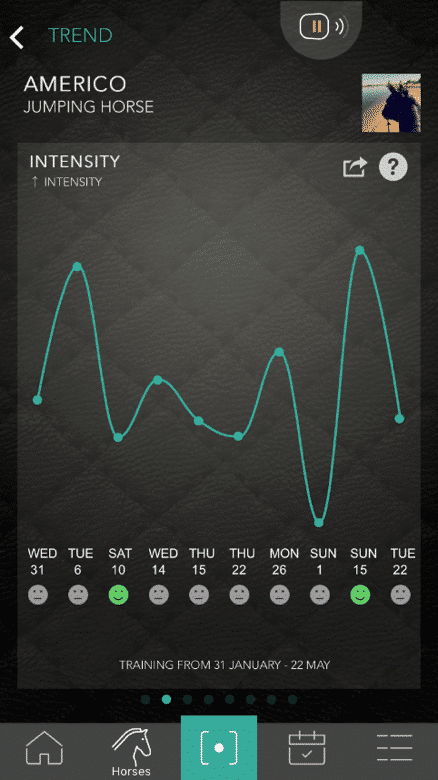Have you ever heard of “Super Compensation”? Did you know that the majority of injuries result from over training? And that always doing intensive training can have negative effects on your horse’s body?
Supercompensation is a term for a specific training theory in which it’s described as a phenomenon that after exercise the body always tends to recover to a point above the original level. This is relevant to human bodies and exersize as well as equine.

The theory
During (heavy) training, micro damage occurs in the tissue. That sounds serious, but it is very natural. The muscles must work and move, and as with everything that moves, there is wear and tear (micro).
The body will respond to this by repairing the damage. And because the body does not like it when there is damage, the body will repair the tissue just a little bit more than it was before. Just like a bone break the body likes to lay down a thick layer of bone around the injured area to prevent recurrence injury and protect the damaged tissue. (Just like we do when something breaks every week. Then we also reinforce it with an extra blob of glue, an extra nail or an extra piece of tape.)
So after this “repair and reinforcement” the tissue is stronger and better prepared for the next training. But the repair takes time. We call this the recovery time. However, if you are going to do a (heavy) workout too early, the body is still in the middle of this recovery (the repair is not yet ready) and you will therefore cause micro-damage again before the recovery from the previous training is complete.
However, if the labor-recovery time ratio is good, the body will become stronger and stronger. The training will therefore also have to be increasingly intensive to find the boundary of the body. Please note: We are talking about long-term accrual here. Very slowly more and more.
If you do this well, you will find that your horse can handle the training better and better, perform the exercises more easily and get more strength and endurance.
Recovery training
It is therefore important that your horse can recover enough after a heavy training.
But giving time to recover is not the same as doing nothing. A light recovery training helps the body perform the recovery The movement and associated blood flow help for a faster and better recovery. Mobilizing the body with flexibility and balance in mind is an excellent way to aid recovery while still training.
So don’t let your horse stand still a day after a heavy training or competition, but train lightly with the emphasis on loosening the muscles in a relaxed step, trot and canter. The main goal is to warm up the muscles and make them loose again and attain a great range of motion again. A nice, relaxing, country hike is also ideal for this as it will not only mobilize your horses body but also train the horses’ mind.
The super compensation is clearly shown in the graph below. After a hard workout, the body is tired and actually worse than before. This is the phase in which the energy level is lower (fatigue) and the body responds to the “breakdown” of cells by training.

The red line indicates the “breakdown” due to overtraining. If a heavy workout is done too early again, the body does not get enough time to recover and the point of supercompensation will not be reached with an opposite effect in the workout as a result.
When the body is no longer stimulated after the supercompensation phase, the supercompensation will disappear. The body then returns to the level before the super compensation. The supercompensation disappears in about a week. It is therefore important to provide the body with a training stimulus in time.
Optimal recovery time?
The optimal recovery period depends on the fitness of the horse, the level of education and the intensity of the training. The heavier the training, the longer the recovery. On average you can plan for 2 to 3 days here of a horse that is conditioned to the level they are training at. Consistent training is crucial to increasing strength and fitness levels or the horse will return to its original fitness level.
It is important that there is a real difference between light and heavy workouts and that you alternate the workouts. Not only in intensity, but also with cross training. (flatwork/jumping/poles/hacking)
It is best to give a horse movement during the recovery period, because this promotes blood flow and therefore the removal of lactic acid.
An schedule for a trained horse could be:
- Day 1: light training
- Day 2: heavy training
- Day 3: light training
- Day 4: free
- Day 5: light training
- Day 6: heavy training
- Day 7: light training
- Day 8: free
Heavy training on average about twice a week focused on your training goals.
The other days you ensure sufficient exercise, mobilizing the joints, stretching the muscles that worked so hard the day before and aiding the recovery.

Where does the Equestic SaddleClip fit in?
No matter how well you plan your training schedule, things happen during training. Sometimes a training will be more intense (or less) then planned due to all kinds of circumstances.
The Equestic SaddleClip monitors your training intensity and shows it in a nice graph. That way you can always see how intense your training was and adjust your schedule accordingly.








